Posted by Brent Modzelewski on September 1, 2020
Petite Sirah, Tempranillo
and Zinfandel
The Other Red Wines
A majority of red wines are made from what is referred to (in the wine industry) as a black grape, because of their very dark-colored skins.
The color of red wine comes from the pigment in the skins that is transferred during the Crushing, Fermentation and Pressing processes.
It is interesting to note that almost all wine grape varietals have clear juice.
Which is why white wine can be made from black grapes.
Not only do the skins provide color to the wine, they also contain Tannins.
Tannins give wine an astringent quality, meaning a "drying effect" you get in your mouth.
High tannin wines will make your tongue feel like it is sticking to the roof of your mouth, or that your lips are sticking to your teeth.
You may hear about the backbone or the grippiness of a red wine, this is referring to the Tannins.
It is important to understand not only what Tannins do to the character of the wine, but that they also give the wine structure which is important for aging wines.
When you are ready to venture beyond drinking Cabernet Sauvignon, Merlot and Pinot Noir, here are some other reds with their expected base aroma/flavor profiles.

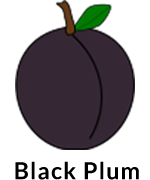



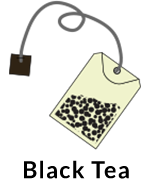
Decanting a young Petite Sirah will help soften the tannins and let the bold flavors come through. Try this wine you are a Red Blend drinker.

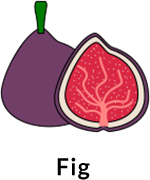



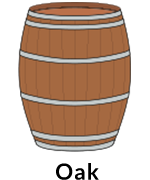



Tempranillo has a Medium+ tannin structure, medium acidity and medium body. Tends to be medium garnet in color, but can be medium ruby as well. A red wine from Rioja is most certainly a Tempranillo, even if not labeled as such. There are 4 main classifications of Rioja wine. Joven is the "base model". Crianza must be aged a minimum of 1 year in oak. Riserva must have minimum of 1 year in oak and an additional 2 years aging in bottle. And finally, Gran Riserva must have minimum of 2 years in oak and an additional 3 years aging in bottle. Try this wine if you are a Pinot Noir drinker.

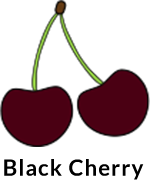

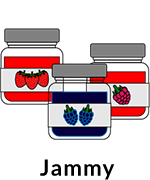



Don't confuse Zinfandel with a White Zinfandel. They are the same grape varietal, but all of the character of this wine comes from the skin. White Zinfandel has minimal skin contact resulting in a flat wine with no character. Lodi California is the prime growing region for Zinfandel in the USA. Try this wine you are a Cabernet Sauvignon drinker.
Petite Sirah (Puh-teet Sr-aa)
This black grape varietal originated in France, but now almost exclusively a New World Wine with California accounting for the lion's share. The first thing you will notice about a Petite Sirah is its deep inky purple color. Petite Sirah is a bold wine, full-bodied, high-tannin with rich, intense aromas and flavors. Aromas and flavors of blueberry, black plum, dark chocolate, black pepper, earth and black tea can be expected.





Decanting a young Petite Sirah will help soften the tannins and let the bold flavors come through. Try this wine you are a Red Blend drinker.
Tempranillo (Tem-pruh-nee-yow)
Another black varietal, but this one originating in Spain. Still predominately produced in Spain, but there are high quality Tempranillos coming from places like South America. Primary aromas and flavors of cherry, fig and plum. Secondary aromas and flavors from the barrel include vanilla, coconut and oak. Aged Tempranillos will also take on flavors and aromas of cedar, tobacco and leather.








Tempranillo has a Medium+ tannin structure, medium acidity and medium body. Tends to be medium garnet in color, but can be medium ruby as well. A red wine from Rioja is most certainly a Tempranillo, even if not labeled as such. There are 4 main classifications of Rioja wine. Joven is the "base model". Crianza must be aged a minimum of 1 year in oak. Riserva must have minimum of 1 year in oak and an additional 2 years aging in bottle. And finally, Gran Riserva must have minimum of 2 years in oak and an additional 3 years aging in bottle. Try this wine if you are a Pinot Noir drinker.
Zinfandel (Zin-fuhn-del)
Black varietal originating in Croatia but primarily grown in the USA with some plantings in Italy, where the wine is called Primativo. Primary aromas and flavors of blueberry and blackberry, with overt secondary notes of black pepper, licorice and tobacco.






Don't confuse Zinfandel with a White Zinfandel. They are the same grape varietal, but all of the character of this wine comes from the skin. White Zinfandel has minimal skin contact resulting in a flat wine with no character. Lodi California is the prime growing region for Zinfandel in the USA. Try this wine you are a Cabernet Sauvignon drinker.
Wine Nerd Fact Information
When Petite Sirah was brought to America from France in the 1800s, it was thought to be a small version Syrah grape, hence the name.
Only later was it discovered that it is not a Syrah grape, but it's own varietal called Durif.
The Durif grape is a cross-breed of the Syrah grape and the lesser-known Peloursin grape, created by the botanist Francois Durif.
The official spelling of the grape is Petite Sirah, although you will see bottles labeled as Petite Syrah.
I have yet to see one labeled as Durif.
Petite Sirah is looked down upon by the French and thought to be inferrior to the classic Syrah grape varietal.
Today, in France, the Durif grape varietal is only approved for planting in a single appellation within Provence.
Wine2Oh Recommended Wine
Petite Sirah
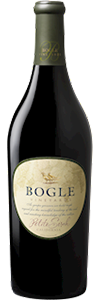
I've been drinking Bogle wines for as long as I can remember. Bogle Vineyards does a great job at offering many entry level wines at the $10 price point. The Petite Sirah is priced right for the everyday drinking wine.
Bogle Vineyards
Petite Sirah
Flavors of blueberry and cocoa. Great value at $10.
Tempranillo
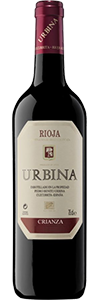
Urbina Winery is a family run winery in Spain that has been around for more than 150 years. Four generations of winemakers. If you want to drink a resonably price Rioja, whether it is Red Rioja (Tempranillo) or White Rioja, try a wine from Urbina.
Urbina
Rioja Crianza
Boasts flavors/aromas of oak, vanilla, white pepper and tobacco. Red cherry and dill aromas/flavors are elegantly balanced with the notes of the barrel/aging. Find it at $20.
Zinfandel
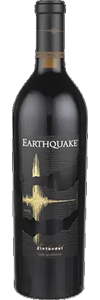
An old vine Zindfanel coming from vines planted more than 100 years ago. Michael David winery is located in Lodi, California, where Zinfandel is king. Nice tasting room to try some of the many excellent wines by Michael David.
Michael David
Earthquake Zinfandel
Wonderful deep rich flavors and aromas of cherry, berries, plums with black pepper and vanilla. Price right around $23.
Disclaimers: We are not affiliated, sponsored or funded for this blog post. It is purely for the love of wine.
Copyright Great Meadow Products, LLC. All rights reserved.
